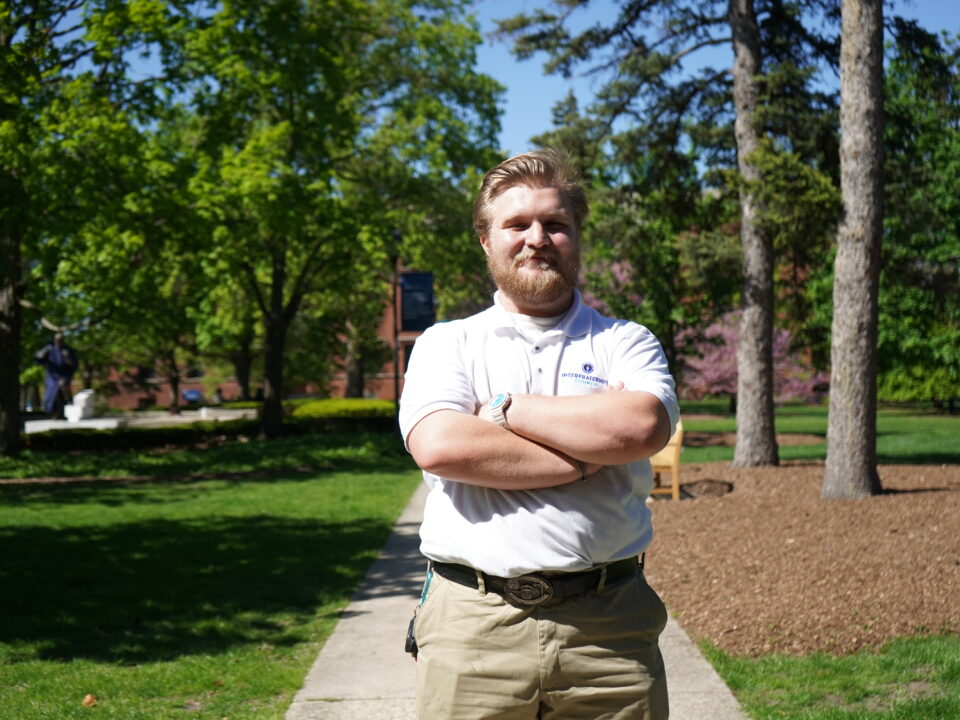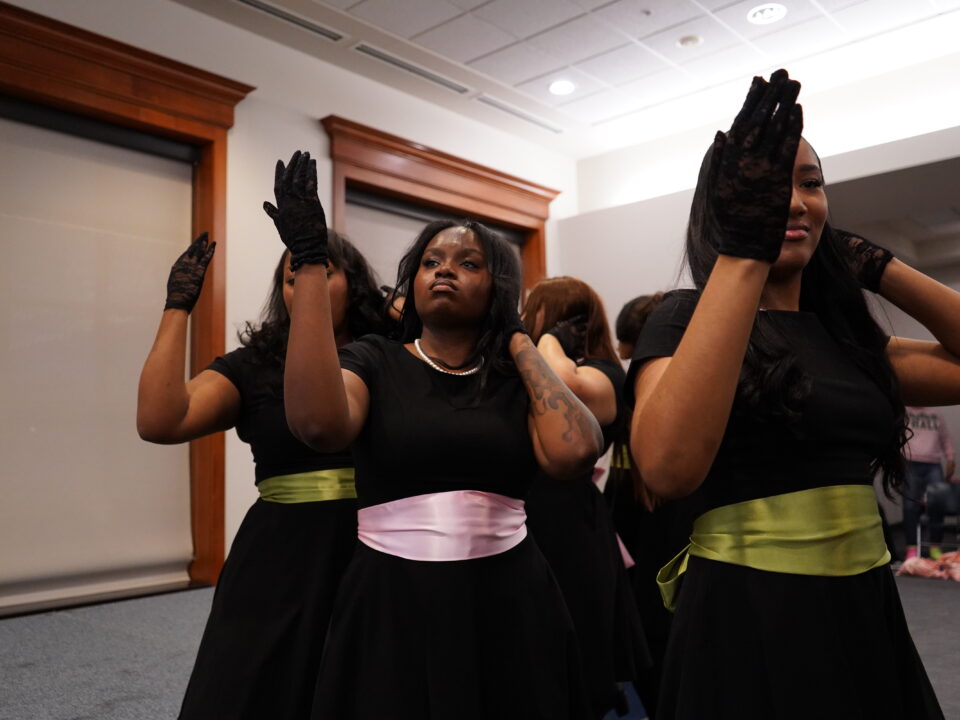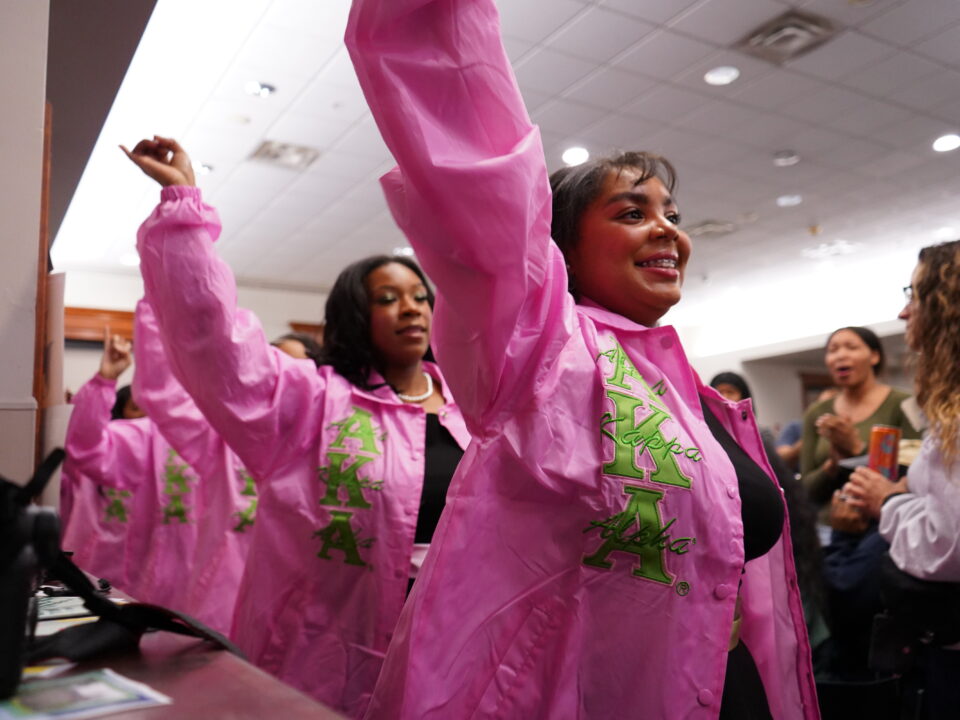Alpha Mu Gamma celebrates Día de Los Muertos with ofrendas across campus
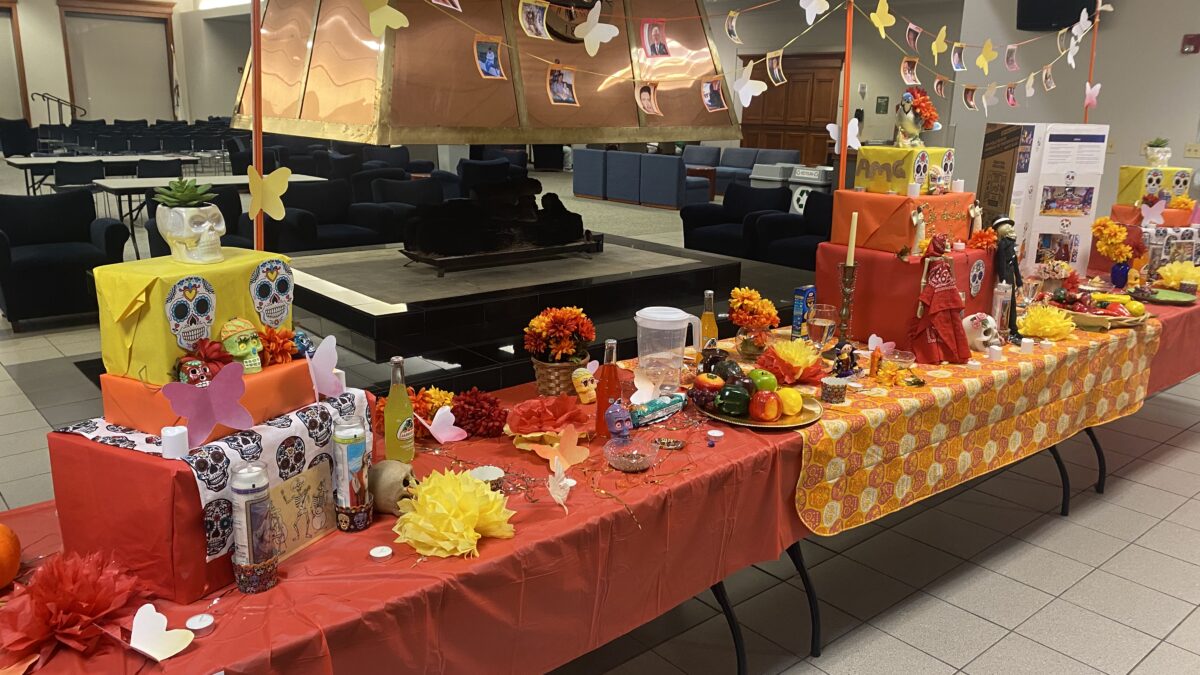
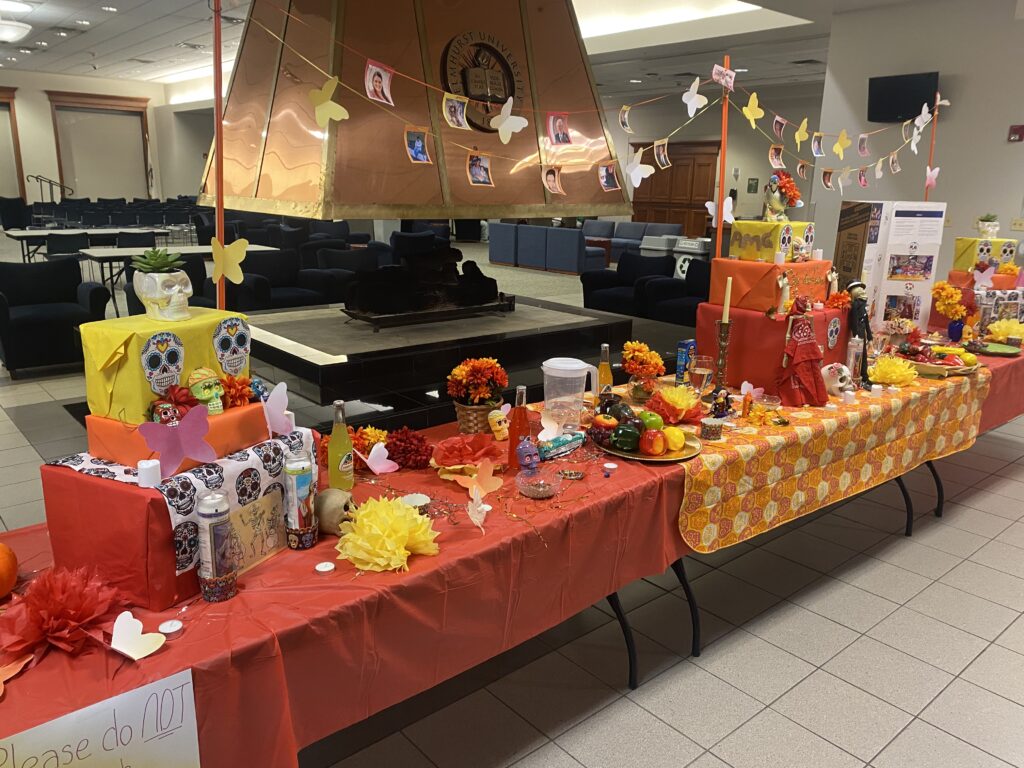
Photo by- Ryan Windle
For Elmhurst University senior Gabriel E. Galindo, secretary of EU’s National Collegiate Foreign Language Honors Society (Alpha Mu Gamma) and staff writer for The Leader, taking part in setting up altars at EU for the Day of the Dead was a culture-rich, communal endeavor.
“It means a lot because it shows a little bit of aspect of our culture as a community,” Galindo said. “For me, it shows the output that I can give as a Mexican American in terms of what I can do to honor not just my ancestors, but all of the family and the community at Elmhurst, especially the Hispanic community now that we’ve gotten our HSI grant.”
In late October, Alpha Mu Gamma members set up altars, or ofrendas, in the Founders Lounge and A.C. Buehler Library to celebrate the Day of the Dead (Día de Los Muertos) and honor professors, staff, and students who have passed away.
Día de Los Muertos is a celebration of life and death that takes place on Nov. 1 and 2, according to Professor Beatriz Gomez-Acuña in an email to The Leader.
The holiday is a blend of Mesoamerican ritual, European religion, and Spanish culture and is celebrated in Mexico and many Mexican and Mexican-American communities in the U.S.
Additionally, Gomez-Acuña explained that Día de Los Muertos is based on the belief that the souls of the deceased can come back to Earth during the two-day celebration, so loved ones display ofrendas showcasing the souls’ favorite foods, drinks, photos, and personal objects to show them that they are not forgotten.
Gomez-Acuña added that Alpha Mu Gamma began the tradition of setting up ofrendas for Día de Los Muertos about eight years ago. Each year, student members of Alpha Mu Gamma spend about two or three days crafting the ofrendas, which display photos of EU community members who died recently.
“It is an intense labor of love that includes designing the ofrendas, getting the necessary objects and placing them artfully,” Gomez-Acuña said.
Galindo said that Alpha Mu Gamma members started by looking at the Museum of Mexican Art for design inspiration. After seeing what artists did with their ofrendas, Alpha Mu Gamma members designed the aspects they wanted to incorporate into their own ofrendas.
Galindo added skulls to the ofrenda because he feels they are a key symbol of Día de Los Muertos.
“It [the skulls] can be sinister, but the way that it’s designed in Mexico is they do have colors, they have flowers and it makes it feel more vibrant,” Galindo said. “So it’s kind of like the dead is still alive, in a way — that’s the message it’s conveying,”
EU senior Stephanie Melchor, a member of Alpha Mu Gamma, added butterflies to the ofrendas.
“We decided that butterflies would symbolize something beautiful like flying, you know, something new, and we had never done that before, so we decided to make some butterflies,” Melchor explained.
EU senior Francisco Gomez, president of Alpha Mu Gamma, explained the meanings behind several pieces of the ofrenda in the Founders Lounge.
The pyramids, or pillars, represent three stages of life — the material world, the limbo, or in between, and the afterlife.
The offerings of food are based on the belief that when the deceased return, they can “have something once they return for their journeys.”
According to Galindo, ofrendas typically include beverages like water, soda, and alcoholic drinks. They also often include bread, most commonly pan de muerto.
However, Galindo noted that Gomez had trouble contacting the bakery he wanted to get pan de muerto from, so Gomez-Acuña bought conchas, another type of Mexican bread, for the ofrendas last minute. According to Galindo, conchas are the “second best” option.
In addition, Gomez explained that Catholic imagery such as the cross, figures like Jesus and the Virgin of Guadalupe, and rosaries were placed on the ofrendas because Día de Los Muertos is a “syncretism between the Indigenous traditions of pre-Hispanic America to the traditions of the Catholic Spaniards once they colonized that area, and those traditions are mixed with one another.”
Melchor expressed that creating the ofrendas was important for the communal, cultural, and honorary aspects of the tradition.
“It just showed that we can come together as a community and to remember those who have left us and aren’t here with us no more on a special day,” Melchor said. “And even if you weren’t of Mexican descent or were familiar with what an ofrenda was, you were able to come help out and know how much that means to us.”
Galindo hopes that the ofrendas brought people together.
“The key thing that we just want people to take away from this ofrenda is that we want to bring unity and honor in terms of what Día de Los Muertos is not just for us Hispanic students but also to the community itself,” Galindo said.

